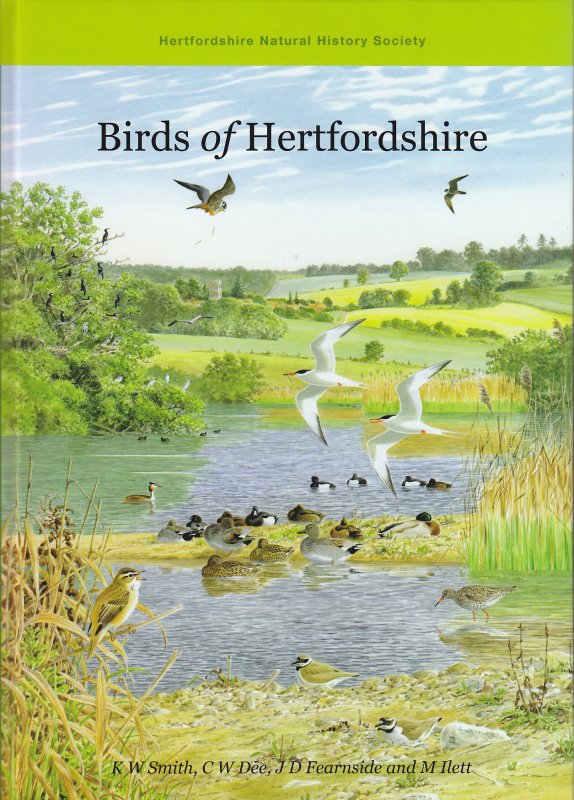
Publisher: Hertfordshire Natural History Society, Welwyn Garden City
Publication Year: 2015
Binding: 2
Page Count: 293
ISBN Number: 978-0-99312-170-8
Price: £39.00
Birds of Hertfordshire
Birds of Hertfordshire is a county avifauna in its broadest sense, drawing upon an impressive suite of material to deliver a comprehensive account of the county’s birds. It is not just the breadth of the material used to deliver the 200 or so pages of species accounts that sets this avifauna apart, but the way in which it has been used.
Rather than stick to the rigid ‘one size fits all’ structure more commonly seen, the approach adopted here varies the material used, selecting that most appropriate to illustrate each species account. Atlas maps, for example, are used to chart the loss of Common Snipe as a breeding species, while the more recent increase in breeding Cormorants is illustrated with just the Bird Atlas 2007-11 map – there were just four ‘possible breeding’ tetrads from the 1988-92 Atlas – and supported by a graph showing WeBS counts back to the 1986/87 winter.
Photographs are used in a similar manner, meaning that while some species accounts contain two images, others go without entirely. The images used all come from within the county and the site at which the photograph was taken is named in each caption. There are a few low quality images, typically of less common species, which underlines that the photographs are being used as a documentary record rather than as artwork within the page design.
The species accounts are well supported by introductory chapters on the Hertfordshire landscape (including geology, river catchments, land-use, agriculture, recreation and birdwatching sites), a history of Hertfordshire ornithology and a chapter on bird surveys and recording within the county, which includes a very useful account of both annual and single species surveys operated in the county. This section also gives a local perspective of the results.
Perhaps the most interesting chapter is the one that follows the species accounts and examines changes in the Hertfordshire avifauna. After a brief introduction, each of the main species groups (e.g. woodland birds, birds of marginal wetlands) is examined and their changing fortunes highlighted both through a paragraph of text and a supporting summary table. The final chapter looks at bird conservation within the county and provides an overview of the range of work being carried out at sites within the county.
The book has been well produced and is a good size in the hand. In addition to the features already mentioned, there is a helpful gazetteer of sites, maps of the main birdwatching locations (including the location of car parks and hides) and the full Hertfordshire list. The book sits well alongside the other publications produced by the Hertfordshire Natural History Society, continuing the theme of quality and thoroughness but also introducing some nice new touches that others working on county avifaunas could learn from. My only criticism would be the treatment of the urban habitat and its birds, which get minimal mention despite the increasing levels of urbanisation and the availability of county level data through projects like BTO Garden BirdWatch and the BTO/JNCC/RSPB Breeding Bird Survey.
Book reviewed by Mike Toms
Buy this book




Share this page